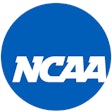
The results of a new survey conducted by the National Athletics Trainers’ Association and the American College of Sports Medicine sheds light on the reasons colleges and universities are having a difficult time hiring new athletic trainers.
The survey of 1,120 collegiate athletic trainers identified four areas of concern, including compensation, organizational culture, burnout and increased work responsibility.
Among the findings, more than 50 percent of athletic trainers were caring for more than 100 student-athletes and 65 percent had been given additional responsibilities without a pay increase.
“They vote with their feet,” Dr. Bill Roberts, chief medical officer of the American College of Sports Medicine, told the Associated Press, noting that athletic trainers are leaving the collegiate ranks for positions with occupational health, hospitals, the military and other positions that offer better pay and more regular hours.
Research has shown NCAA collegiate athletics injury rates were reduced by 9.5 percent and concussion injury rates by 6.7 percent with schools that had one standard deviation below the median number of 118 student-athletes per clincian. In addition, re-injury rates were lower in schools that had lower student-athletes to athletic trainer ratios based upon their ability to care for student-athletes more attentively and consistently.
"Insufficient staffing is associated with burnout and a lack of emotional stability within the health care profession as a whole," a joint statement noted. "A study in the secondary school setting identified 18 percent of ATs committing at least one medical error in the last 30 days. This data is almost twice as high as physicians at 10.5 percent and may be due to physicians having more control of their patient load and schedules. In addition, a direct relationship exists between emotional exhaustion and the number of medical errors committed by ATs."
Addressing salary requirements is likely one of the most pressing challenges.
“There are just so many more opportunities for an athletic trainer from an employment setting,” said panelist Brant Berkstresser, chair of the Intercollegiate Council for Sports Medicine. “And so when we look at these settings, such as industrial, military, physician offices, things like that, they have really increased employment opportunities for us as ATs. And so the challenge, the significant challenge right now is they’re hiring higher compensation models.”
Roberts agrees.
“I think the call action is to ask or insist that our colleges look at their salary structure and how they could bring athletic trainers up to par so that they aren’t leaving the field,” Roberts said.
The survey also found that 47 percent of respondents had less than 10 years of experience as athletic trainers.
“If we spend our time at colleges breaking in all the new ones and then losing them, we lose that expertise that comes with time on the job,” Roberts said.





































